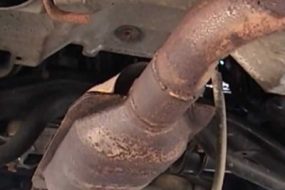
All vehicles irrespective of their model come with a battery that functions as the source of power which enables the car to start. The battery is charged by an alternator which only works when the car is turned on. However. Does the alternator charge the battery while idling?
Yes, the alternator can charge the battery while idling but does not charge as fast as it does when the car engine is running.
Does the Alternator Charge the Battery While Idling?
Yes, the alternator charges the battery when it’s idle. This is however dependent on the length of time for which the car was idle. A car that has not been in use for a long period of time will have a dead battery.
The work of the alternator is beyond just charging the battery in the car, it is also responsible for powering up other electrical systems such as; the headlight, radio, etc., in the car. This is why it is very risky having a bad alternator in your car.
Because of its other responsibilities, the alternator takes a longer time (in hours) to charge the battery, it’s more like working with limited resources.
As no RPM is generated when the engine is at rest, the alternator has a hard job of keeping up with charging and with other electrical systems.
The alternator can charge the battery while the engine is idle because of the RPM it has when idle, although it is not usually high compared to when the engine is running.
It is advisable that in order to keep the battery in good condition for a long time, the car should be taken for a ride once in a while even when it is idle.
The car shouldn’t be idle for a long period, if the plan is to keep it idle then do yourself good by taking it out for at least a 30-minute spin.
How Long Should a Car Run Before the Alternator Charges the Battery?
One can only make an estimate of the time it takes to charge a car battery as the length of time is dependent on so many factors.
The time it takes to charge a car battery depends on whether the car is idle or in use. The alternator charges the battery faster when it is in use than when idle.
An idle car takes longer to charge and it might not get fully charged because the engine isn’t running.
The size of the battery is also a determining factor while charging. For a car that uses a big battery, the amp inside will be higher, therefore, the alternator takes more time in charging it up. While a car with a small battery takes a short time to charge.
Also, If the battery was completely dead before the charging process began then it will take a longer time to get fully charged compared to a battery that was halfway down.
At What RPM Does the Alternator Charge the Battery?
RPM is the revolution per minute at which the alternator charges the battery. The RPM needed by the alternator will depend on its specification. The different specification requires different RPMs to start charging.
At a minimum, 1000 RPM when starting out is needed by the alternator to start charging, although it can be higher than this depending on the car’s speed and specification. The RPM can go from 1000 to 6000 which is said to be its full output real quick.
The speed at which the car is running will determine the RPM generated from the engine which influences the battery charge time.
A car going at full speed will generate more RPM thereby allowing the alternator to charge the battery within a short time, with more RPM generated the alternator can charge at an average of 30 minutes.
However, for a car not going at full speed, the charge time will take longer as the RPM generated by the engine will be very low.
What are the Major Functions of the Alternator?
Knowing the functions of the alternator in your car helps you to better troubleshoot any problems related to it. Some of the major functions are stated below
It Recharges the Battery
One of the major functions of the alternator is to charge and recharge the battery. The charging is done while the car is in use and the engine running, the alternator is said to be able to charge the battery while the car is not in use but at a slow pace compared to when it is been used. The alternator keeps the battery in good condition for a long time
It Powers Other Components in the Car
Other components of the vehicle like radio, steering, engine cooling fans, wipers, headlight, etc., are powered by the alternator.
It Works by Turning Mechanical Energy into Electrical Energy
The conversion process starts when the car engine is on. The converted energy is then directed to power all electrical components of the vehicle.
Car batteries are also known as “Automotive Battery”. They are rechargeable and require a power source usually external to charge as they cannot charge on their own.
The battery recharges continually with the help of the alternator, the alternator is a part of the vehicle’s system without which the battery cannot charge except by using a battery charger.
One can determine whether the car battery is dead, low, or fully charged by checking the readings on the meter. The alternator automatically charges the battery when the engine is running, if this doesn’t happen then something is wrong.
It has been established that the alternator is able to charge the battery when the car engine is running but is it also possible for it to charge the battery while the engine is idle?
Conclusion
It is important to note that the alternator’s ability to charge your battery when it’s not in use depends on its voltage. An alternator with an average voltage may not be able to charge the battery while the electrical systems are working.
If the headlight or radio is on while you’re trying to charge the battery, you may end up with an undercharged battery because the load on the alternator is much.
The battery can only power other accessories in the car when the engine isn’t running, but when the car is running the alternator does the work. A known way to have your battery charge faster is by revving up the engine. In doing so, more RPM is generated









